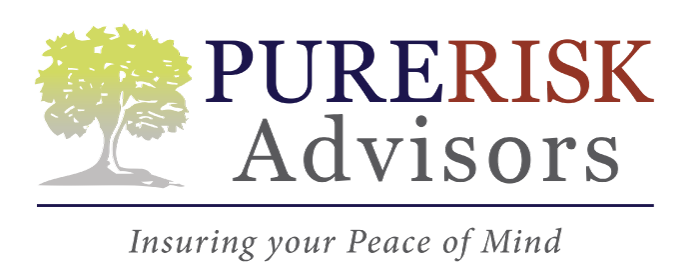What role does flood insurance play for condo associations, and when is it required?
See How We're Different
or call us: 303-834-1001
Condominium associations in Florida face a growing challenge: the rising cost and complexity of insurance coverage. Since 2022, condo association insurance costs have doubled, driven by factors including regulatory changes and heightened risk awareness following tragic incidents like the 2021 Surfside collapse. Among these insurance needs, flood insurance stands out as a critical yet sometimes misunderstood component. Understanding when flood insurance is required and how it protects condo communities can make a significant difference in managing risk and finances.
Florida’s unique geography means flood risk is a constant concern. Many condo associations rely on flood insurance to protect common areas and building structures from water damage. According to Pamela Malfavon, director of financial products and services for FirstService Financial, most associations purchase flood insurance through FEMA’s National Flood Insurance Program (NFIP), which often offers more competitive rates than private insurers. This article explores the role flood insurance plays for condo associations, the circumstances that make it mandatory, and recent developments shaping this coverage landscape.
Why flood insurance is essential for condo associations
Flood damage can devastate a condominium community. Unlike individual homeowner policies, condo association insurance typically covers common elements like roofs, hallways, and shared utilities. Flood insurance extends this protection to water-related disasters, which are frequent in Florida’s coastal and low-lying areas. The financial implications of flooding can be staggering, with repair costs often running into the millions, depending on the extent of the damage. This reality makes it imperative for condo associations to consider flood insurance as a foundational element of their risk management strategy.
Flood insurance not only safeguards physical assets but also helps maintain property values and community stability. Without it, a major flood could leave associations scrambling to fund costly repairs or face legal liabilities. Stephen Polinsky, an insurance expert, emphasizes that flood insurance is legally required in many cases and a wise precaution in all others. This coverage ensures that associations can respond quickly and effectively to flood events, minimizing disruption for residents. Furthermore, the presence of flood insurance can enhance the marketability of units within the community, as prospective buyers often prioritize properties with comprehensive insurance coverage, knowing they are protected against potential disasters.
Given the doubling of condo association insurance costs since 2022, securing flood insurance through programs like the NFIP can provide a more affordable option. The NFIP offers policies designed specifically for condominium associations, covering building structures and common areas, which private insurers may not always provide at competitive rates. This makes NFIP a valuable resource for many Florida condo communities according to FEMA. Additionally, the NFIP offers community rating systems that can lower premiums for associations that take proactive measures to reduce flood risk, such as elevating structures or implementing effective drainage systems. These initiatives not only save money but also foster a culture of preparedness within the community.
Flood risk and mapping improvements
Accurate flood risk assessment is crucial for determining insurance needs. Tools like FLOPIT, which improve spatial flood probability quantification through high-resolution mapping, help associations and insurers better understand exposure. Enhanced mapping allows for more precise flood zone designations, which directly impact insurance requirements and premiums as detailed in recent studies. Moreover, these advancements in flood mapping technology can also inform local planning and development decisions, ensuring that new construction adheres to updated flood risk assessments. By integrating this data into their planning processes, condo associations can make informed choices about future developments, enhancing the resilience of their communities against flooding.
When is flood insurance required for condo associations?
Florida law and lending practices set clear conditions under which condo associations must carry flood insurance. One key trigger is the location of the property. If a condo sits in a federally designated high-risk flood area, flood insurance is mandatory. This requirement helps protect lenders and residents from the financial fallout of flood damage. The Federal Emergency Management Agency (FEMA) designates these high-risk areas based on historical data and predictive modeling, which takes into account factors like elevation, proximity to water bodies, and rainfall patterns. As such, condo associations in these zones are not only safeguarding their assets but also fulfilling a crucial legal obligation.
Additionally, if a mortgage on the condo property is held by a government-backed lender, flood insurance becomes a condition of the loan. These regulations ensure that the property has adequate protection against flood losses, reducing the risk for both lenders and owners. This is particularly important in Florida, where flood risk is elevated due to frequent storms and rising sea levels according to FirstService Residential. The implications of these requirements extend beyond immediate financial protection; they also foster a culture of preparedness within the community, encouraging residents to engage in discussions about disaster readiness and recovery plans.
New legislation passed in 2022 also affects flood insurance requirements indirectly. Florida now requires condo associations to maintain sufficient reserves for major repairs and to conduct reserve studies at least every ten years. These measures encourage financial preparedness, which complements insurance coverage by ensuring funds are available for flood-related repairs and other emergencies as reported by WUSF. This proactive approach not only helps associations meet their legal obligations but also enhances the overall stability and attractiveness of the community, potentially increasing property values over time.
Legal and practical considerations
Stephen Polinsky points out that while flood insurance is legally required in specific situations, it is advisable for all condo associations. Floods can occur outside high-risk zones, and without coverage, associations may face significant out-of-pocket expenses. Being proactive with flood insurance can prevent financial strain and ensure quicker recovery after flood events according to CondoAssociation.com. Furthermore, the financial implications of not having flood insurance can be devastating; associations may find themselves unable to cover the costs of repairs or even face litigation from residents seeking compensation for damages. This highlights the importance of not only having insurance but also understanding the specific terms and conditions of the policy, including coverage limits and deductibles.
Moreover, condo associations should consider conducting regular risk assessments to identify vulnerabilities and develop comprehensive emergency response plans. Engaging with local emergency management services can also provide valuable insights into best practices for flood preparedness. By fostering a community-wide awareness of flood risks and response strategies, associations can create a more resilient environment that benefits all residents, ensuring that they are not just compliant with legal requirements, but also equipped to handle potential disasters effectively.
Impact of recent events and regulatory changes on flood insurance
The tragic collapse of Champlain Towers South in Surfside, Florida, in 2021 sent shockwaves through the condo insurance market. This event exposed vulnerabilities in building maintenance and risk management, leading to increased scrutiny and higher insurance premiums for condo associations statewide. Since then, insurance costs have surged, doubling in some cases since 2022 reports CMCAcorner.com.
In response, Florida enacted laws requiring condo associations to maintain adequate reserve funds and perform regular reserve studies. These rules aim to improve financial resilience and ensure funds are available for major repairs, including those related to flood damage. This regulatory environment makes flood insurance not just a protective measure but a component of broader compliance and risk management strategies.
Insurance providers have also adjusted their offerings, with many associations turning to the NFIP for flood coverage due to its competitive rates and specialized policies for condos. This shift reflects a balancing act between rising costs and the need for comprehensive protection.
Financial planning and insurance strategy
With insurance premiums climbing, condo associations must carefully evaluate their coverage options. Flood insurance through the NFIP remains a practical choice, especially for properties in high-risk areas or with government-backed mortgages. Associations should integrate flood insurance into their overall risk management and reserve planning to avoid unexpected financial burdens.
Moreover, the evolving landscape of climate change and its associated risks has prompted many associations to reassess their flood risk exposure. Increased frequency and intensity of storms, coupled with rising sea levels, mean that properties previously deemed low-risk may now face significant threats. Consequently, associations are encouraged to conduct thorough risk assessments and consider additional coverage options, such as excess flood insurance, to safeguard against potential losses that exceed standard policy limits.
Furthermore, the importance of community engagement in these discussions cannot be overstated. Condo associations should actively involve residents in understanding the implications of flood insurance and the necessity of maintaining adequate reserves. Educational workshops and informational sessions can empower residents to appreciate the value of proactive financial planning and foster a collective commitment to maintaining the safety and integrity of their community. This collaborative approach not only enhances awareness but also strengthens the association’s ability to navigate the complexities of insurance in a changing regulatory landscape.
How flood insurance coverage works for condo associations
Flood insurance policies for condo associations typically cover the building’s structure and common areas but not individual units. This distinction is important for residents to understand, as personal property inside units usually requires separate coverage.
The NFIP offers standardized policies that cover damage from flooding caused by storms, heavy rain, storm surges, and other water-related events. Coverage includes repairs to walls, floors, electrical systems, and other structural elements. Having this insurance in place ensures the association can quickly address damage to shared property without relying solely on reserve funds.
Private flood insurance options exist but may come with higher premiums or limited coverage compared to the NFIP. Given the rising insurance costs, many associations find the NFIP’s competitive pricing and comprehensive coverage a better fit for their needs.
Preparing condo associations for flood insurance needs
Effective flood insurance starts with understanding risk and planning accordingly. Condo boards should work with insurance professionals to assess flood exposure based on location and building characteristics. Using tools like FLOPIT for detailed flood mapping can inform these decisions and help tailor coverage.
Maintaining reserve funds as required by Florida law is another critical step. These reserves provide a financial cushion for repairs and insurance deductibles, reducing the impact of flood events on the community’s budget.
Education is also key. Condo residents and board members should be aware of what flood insurance covers and what it does not. Clear communication can prevent surprises and ensure everyone understands the importance of this coverage for the community’s long-term safety and financial health.
Working with insurance providers
Choosing the right flood insurance policy involves comparing options and understanding the trade-offs between cost and coverage. Associations often start with the NFIP for its affordability and tailored condo policies. However, private insurers may offer endorsements or supplemental coverage that address specific needs.
Regularly reviewing insurance policies and reserve studies helps associations stay compliant with regulations and adapt to changing risk profiles. This proactive approach can reduce the likelihood of coverage gaps or unexpected expenses.
Before you go: key takeaways on flood insurance for condo associations
Flood insurance is a vital part of protecting Florida condo communities from water damage risks. It covers common areas and building structures, providing financial support when flood events occur. Associations must carry flood insurance if located in high-risk flood zones or if their mortgages are backed by government lenders.
Rising insurance costs and new state laws requiring reserve studies make flood insurance part of a broader strategy for financial resilience. Programs like FEMA’s NFIP offer competitive, specialized coverage that many associations rely on. Tools for improved flood risk mapping and expert guidance help boards make informed decisions.
Ultimately, flood insurance is not just a legal requirement in many cases-it is a practical safeguard that can protect property values, reduce financial uncertainty, and ensure quicker recovery after floods. Condo associations that understand their flood insurance needs and plan accordingly will be better positioned to face Florida’s flood risks with confidence.
Frequently Asked Questions
Q: When is flood insurance required for a condo association?
A: Flood insurance is required if the condo is in a high-risk flood area or if the mortgage is held by a government-backed lender.
Q: Does flood insurance cover individual condo units?
A: No, flood insurance for condo associations typically covers building structures and common areas. Unit owners need separate policies for personal property.
Q: What is the National Flood Insurance Program (NFIP)?
A: The NFIP is a federal program offering flood insurance policies, often at competitive rates, specifically designed for condo associations and other property types.
Q: How have insurance costs for condo associations changed recently?
A: Since 2022, condo association insurance costs in Florida have doubled due to regulatory changes and increased risk awareness.
Q: Can private flood insurance replace NFIP coverage?
A: Private flood insurance may supplement or replace NFIP policies but often comes at higher premiums and may have different coverage limits.
Q: What role do reserve studies play in flood insurance planning?
A: Reserve studies help associations plan financially for major repairs, including flood damage, ensuring funds are available alongside insurance coverage.













